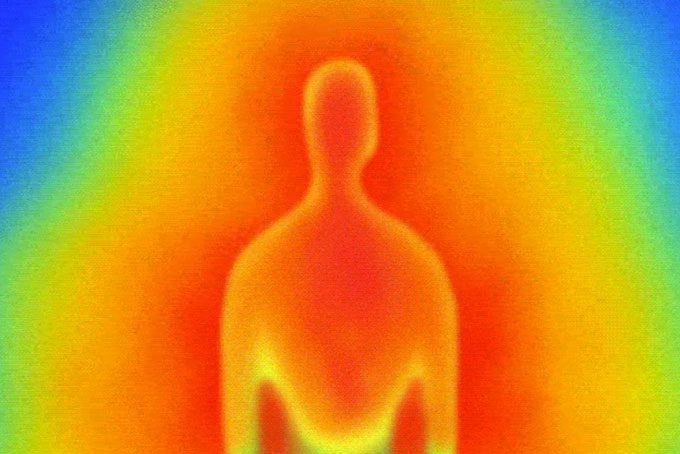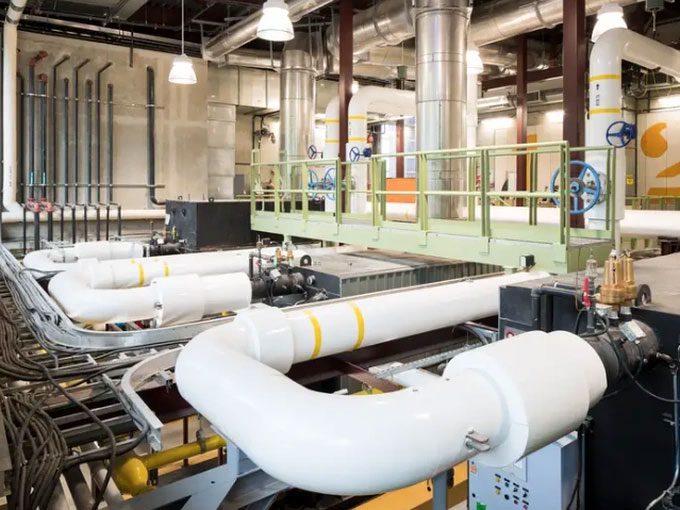Humans are wasting a significant amount of energy from the surrounding sources.
Heat is energy, and every day we waste a lot of it. When machines and buildings burn fuel to operate, even our bodies generate heat that escapes into the atmosphere.

Our bodies, machines, and buildings emit a lot of heat. Can we utilize that excess heat? (Photo: Robyn Phelps/ Insider).
Cities are overflowing with this waste product. According to the U.S. Environmental Protection Agency (EPA), cities in America are 13 degrees Celsius hotter than the surrounding rural areas.
The EPA estimates that over 60% of energy in the U.S. is wasted in the form of heat energy. If this heat could be reclaimed, businesses and municipalities could secure a very abundant local energy source without relying on fossil fuels.
Currently, Europe and Canada are implementing projects to reclaim and use excess heat.
In a nightclub in Glasgow, UK, heat emitted from patrons is reclaimed through funnels and directed into cooler rooms. A district in London is also reclaiming heat from the subway tunnels and supplying this heat to nearby homes.
Pipes beneath a road in Germany circulate a liquid that absorbs heat from asphalt in the summer, storing it to be used for warming and drying the road in winter.
These projects, though small, are pioneering efforts paving the way for other countries and businesses to tap into the excess heat around us.
Suburban Vancouver, Canada, Recycles Heat from Sewage

The sewage pumping station in the Olympic Village in Vancouver doubles as a heat recovery facility. (Photo: City of Vancouver).
When you wash dishes, shower, or do laundry, hot water flows down the drain and into the sewage system. If you live in False Creek, a suburb of Vancouver, Canada, the heat from that wastewater can return to warm your home.
In most places, wastewater passes through a pumping station to the wastewater treatment plant. But in False Creek, the pumping station also acts as a heat recovery facility.
A portion of the sewage water is sent to heat pumps to extract heat, which is then transferred into water in another piping system, raising the temperature of the water to 80 degrees Celsius. This hot water is then distributed to households in the area.
This project began in 2010 when the city built a sustainable central village for the Winter Olympic Games. To heat the new homes while minimizing fossil fuel use, the city relied on the sewage system.
Today, this project recovers heat from wastewater and supplies it to 44 buildings, including over 6,000 residences, a university dormitory, a science museum, and numerous shopping centers.
Data Centers Can Also Heat Homes
The city of Stockholm, Sweden, is a prime example of utilizing the abundant heat from data centers.
The world increasingly needs more computer server storage to process and store information. This demand causes warehouses to heat up and emit a lot of heat.
Stockholm Exergi has purchased excess heat from nearby data centers and redirected it to homes. Additionally, Exergi also buys waste heat from local businesses, such as breweries, supermarkets, and wastewater treatment facilities.
Among these heat sources, data centers contribute the majority, accounting for about 90% of the heat in the entire region.
Unexploited Heat Lies Beneath the Surface

The wastewater heat recovery energy center lies beneath a bridge. The nail-shaped heat columns with LED lights change color based on the amount of energy extracted from the system. (Photo: City of Vancouver).
Urban heat islands—the phenomenon causing urban areas to become hotter—extend down to the underground as well. Excess heat can harm ecosystems beneath riverbeds, as fish and other life forms prefer cooler water.
Overheated groundwater also impacts drinking water quality, as warm water environments can foster microbial growth or lead to heavy metals leaching into surrounding soil.
However, we can cool the ground and reduce fossil fuel use by capturing heat underground.
A study conducted in 2022 stated, “A single arrow can hit two targets.” We can obtain carbon-free energy while simultaneously mitigating the effects of climate change and urbanization on the environment.
Ms. Susanne Benz, co-author of the study, and her colleagues assessed over 8,000 sites, mostly in Europe. They found that approximately 25% of these locations have sufficient underground heat to recycle energy.
This rate will certainly increase with rising global temperatures. According to the study’s assessment, by the end of this century, 73% of the mentioned sites could meet the entire heating demand of their inhabitants using heat from the ground.
Exploiting groundwater is one way to utilize underground heat. Areas without groundwater can install pipes underground to circulate fluids through these pipes to absorb heat and bring it to the surface.
Furthermore, subway lines are also an easy place to start heat recovery efforts. In 2020, the Islington suburb of London constructed a system to capture heat from subway lines for distribution to households.
“Heat takes some time to move underground. Therefore, if you time it right and place the heat pump or pipe at the correct depth, all excess heat from summer will reach you in winter when you actually need it for heating. In this case, the ground is like a thermal battery,” Ms. Benz affirmed.



















































